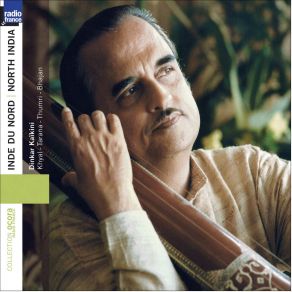Inde du Nord
Download links and information about Inde du Nord by Dinkar Kaikini. This album was released in 1997 and it belongs to World Music genres. It contains 6 tracks with total duration of 01:05:12 minutes.

|
|
|---|---|
| Artist: | Dinkar Kaikini |
| Release date: | 1997 |
| Genre: | World Music |
| Tracks: | 6 |
| Duration: | 01:05:12 |
| Buy it NOW at: | |
| Buy on iTunes $5.99 | |
Tracks
[Edit]| No. | Title | Length |
|---|---|---|
| 1. | Raga Malkauns - Nom Tom Alap (Khyal) [feat. Shashikala Kaïkani, Aditi Uppadhya, Anand Kunte & Yogesh Kaïkini Samsi] | 8:45 |
| 2. | Raga Malkauns - Vilambit Ektal (Khyal) [feat. Shashikala Kaïkani, Aditi Uppadhya, Anand Kunte & Yogesh Kaïkini Samsi] | 16:55 |
| 3. | Raga Malkauns - Drut Tîntal (Khyal) [feat. Shashikala Kaïkani, Aditi Uppadhya, Anand Kunte & Yogesh Kaïkini Samsi] | 10:13 |
| 4. | Raga Khamaj - Sitarkhani (Tarana) [feat. Shashikala Kaïkani, Aditi Uppadhya, Anand Kunte & Yogesh Kaïkini Samsi] | 10:53 |
| 5. | Raga Bhairavi - Drut Tîntal (Thumri) [feat. Shashikala Kaïkani, Aditi Uppadhya, Anand Kunte & Yogesh Kaïkini Samsi] | 9:55 |
| 6. | Bhajan De Kabir - Satwa-Tal (feat. Shashikala Kaïkani, Aditi Uppadhya, Anand Kunte & Yogesh Kaïkini Samsi) | 8:31 |
Details
[Edit]This is an album of vocal raags from the North Indian classical tradition. As the liner notes explain, classical singing in India is becoming rare and people are turning to archival recordings to satisfy their desire for it. Such a state of affairs makes a contemporary album like this one all the more valuable. Dinkar Kaikini is accompanied by the singing of his wife and daughter, but their ethereally beautiful voices are recessed into the background. (Indian classical music has no harmony, being instead based on melody, ornament, and complex rhythms — so when two singers sing at the same time one either doubles the other or "comments" on it without polyphony.) The album also features Anand Kunte on sarangi and Yogesh Kaikini Samsi on tablas. The first and longest of the album's four raags, "Raga Malkauns," features an unusually slow alap (introductory movement without percussion) followed by a somewhat slow vilambit (slow movement with percussion) before moving into a brisk concluding drut. The second raag, "Raga Khamaj," is based on a major scale with an augmented minor seventh, which makes the tune sound rather a lot like Western folk music. Here, Kaikini uses a vocal technique called tarana, a singing of nonsense syllables rather like scat in jazz. The third and forth ragas are exceptionally atmospheric. The liner notes are excellent. This disc can be warmly recommended to anyone interested in Indian classical music.